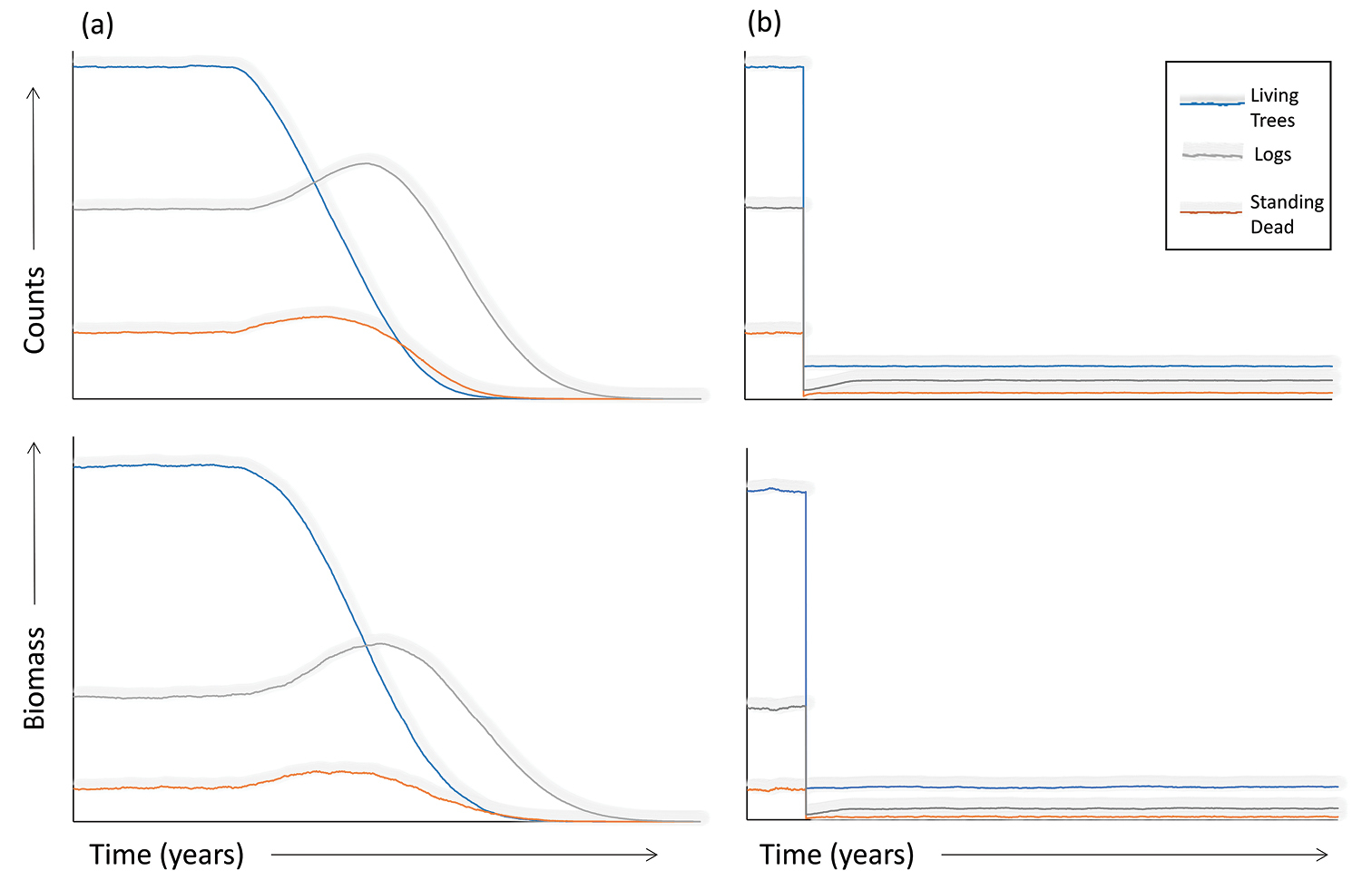
|
||
|
Conceptual model for a hypothetical forest that: a degrades systematically over time (e.g., through disease or drying), until the region is completely deforested, and b experiences a rapid (but not total) deforestation event (e.g., conversion to agriculture), in both cases with no subsequent recovery. In the first case, we would expect to see a lagged rise in the relative proportion of the woody biomass found in standing dead trees and a subsequent lag towards logs—which would peak at some time during the phase of decline of the number and biomass of the living trees. In the latter case, the character of the forest might be quite similar (unless heavily fragmented), but reduced substantially in areal extent. |